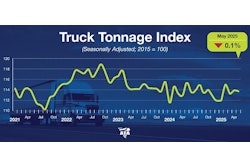Independent aftermarket and commercial vehicle dealer executives appreciate the work their vendor partners put in during the post-pandemic supply chain crisis but there are still areas where those vendors can improve.
During MEMA’s heavy-duty ‘Talk From the Top’ mid-year update webinar Tuesday, MEMA Aftermarket Suppliers Commercial Vehicle Lead Shannon O’Brien shared those areas where supplier operations could be stronger and where channel partners would benefit from more vendor support to remain upright amid depressed business conditions in a year where a market rebound was anticipated but never arrived.
“In 2024, many expected a market recovery that didn’t materialize,” she said. “There was a sense of relief [entering 2025] that it would finally come.”
 Responses from independent aftermarket distributor and commercial vehicle dealers to a MEMA survey in November/December 2024.MEMA Aftermarket Suppliers
Responses from independent aftermarket distributor and commercial vehicle dealers to a MEMA survey in November/December 2024.MEMA Aftermarket Suppliers
Now that that hasn’t occurred and economists in and outside the industry are unaware of when the next turnaround could be, O’Brien said now is the time for suppliers to up their service game and strengthen partnerships with distributor partners who are eager for any leg up they can find to connect with customers and move product during a soft summer sales season.
[RELATED: Tariff uncertainty and inflation keep pressure on freight and manufacturing sectors]
One major area where O’Brien said distributors always appreciate supplier assistance is parts identification, ordering and technology adoption. She said distributor responders to MEMA’s questions continue to urge their vendor partners to implement data standards and electronic data interchanges (EDI) to enhance their customer-facing sales efforts. O’Brien said many distributors are aware that their businesses are behind the technology curve when it comes to sales and marketing their products, but that they need help from their vendors to integrate new tools to strengthen their go-to-market capabilities.
Distributors also have concerns about offshore competition, and how their North American-based supplier partners are combating it. O’Brien said offshore products earned a larger foothold in the aftermarket during the 2022 supply chain crisis and those global brands are continuing to put pressure on domestic suppliers today. She said the ongoing freight recession and falling revenues for carriers are forcing fleets “to look for any option” that can reduce their maintenance costs — even fleets that have long been brand-loyal OE genuine buyers.
O’Brien said distributors believes their suppliers can no longer win business on their brand and North American history alone. Price pressures are too overwhelming. But that doesn’t mean local suppliers and ‘Made in America’ manufacturing is dead. She said established, longstanding brands still have a leg up in the marketplace if they can live up to their reputations, providing top-level quality, availability and delivery performance, customer service and more. Especially in specific product categories. O’Brien said suppliers who are focused in those key areas and educating their distributors on total cost of ownership (TCO) advantages can still succeed, and are appreciated by their channel partners.
Distributors also continue to covet supplier honestly and transparency in all forms. O’Brien said many distributors noted a common challenge they experience is periods of limited availability for a product line in which a vendor doesn’t offer any clarity into why a product is suddenly harder to acquire, and how long it may last. She said distributors understand that supply chains are fragile — not every part can be available without incident every day. But when something does slow, it would make their lives much easier if their vendors could offer insight into why so they could implement back-up plans to support customer demand.
“When an issue arises, [distributors] face vague assurances from their supplier point of contact that things will get better soon,” she said. “What they really want is transparency.”












